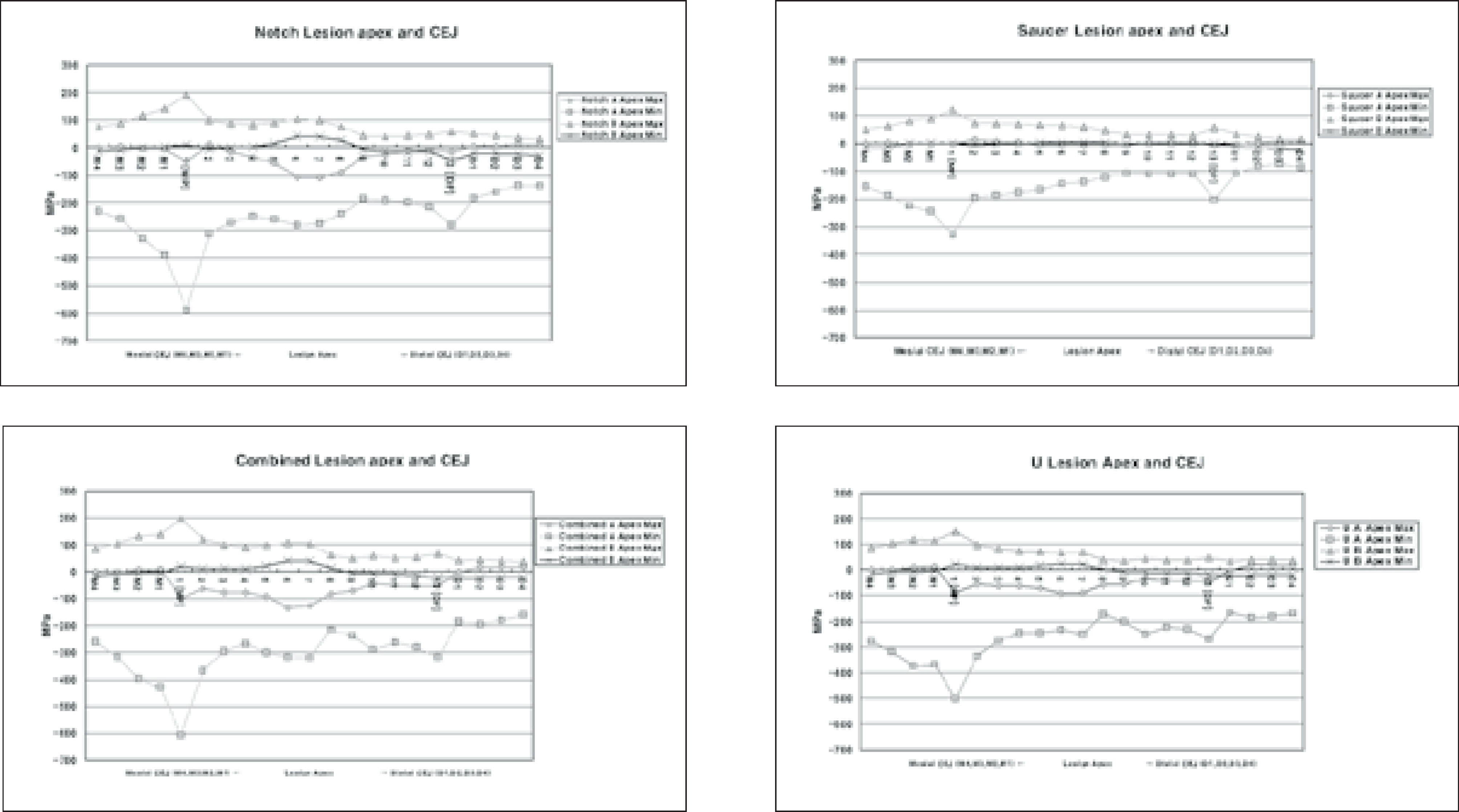References
1. James D, Linda C, Levitch . How dentists classified and treated non-carious cervical lesions. J Am Dent Assoc 124(5):46–54.
1993;
2. Bradley T, William B Hancock. Examining the prevalence and characteristics of abfraction like cervical lesions in a population of U.S. veterans. J Am Dent Assoc 132(12):1694–1701.
2001;
3. Lee WC, Eakle WS. Stress-induced cervical lesions: Review of advances on the past 10 years. J Prosthet Dent 75:487–494.
1996;
4. Grippo JO. Abfractions: A new classification of hard tissue lesions of teeth. J Esthet Dent 3(1):14–19.
1991;
5. Gallien GS, Kaplan I, Owen BM. A review of noncari-ous dental cervical lesions. Compend Contin Educ Dent 15(11):1366–1372.
1994;
6. Grippo JO, Schreiner S. Attrition, abrasion, corrosion and abfraction revisited-A new perspective on tooth surface lesion. J Am Dent Assoc 135(8):1109–1117.
2004;
7. Rees JS, Hammadeh M. Undermining of enamel as a mechanism of abfraction lesion formation: a finite element study. Eur J Oral Sci 112:347–352.
2004;
8. Radentz WH, Barnes GP, Cutright DE. A survey of factors possibly associated with cervical abrasion of tooth surface. J Periodontol 47:148–154.
1976;
9. Kahn F, Young WG, Shahabi S, Daley TJ. Dental cervical lesions associated with occlusal erosion and attrition. Aust Dent J 44:176–186.
1999;
10. Levitch LC, Bader JD, Shugars DA, Heymann HO. Non-carious cervical lesions. J Dent 22:195–207.
1994;
11. Leinfelder KF. Restoration of abfracted lesions. Compend Contin Educ Dent 15(4):1396–1400.
1994;
12. Park Jk, Hur B, Lee HJ. The effect of configuration on marginal leakage of class 5 restoration. J Kor Acad Cons Dent 26(2):162–170.
2001;
13. Kuroe T, Itoh H, Caputo AA, Konuma M. Biomechanics of cervical tooth structure lesions and their restoration. Quint Int 31(4):267–274.
2000;
14. Grippo JO. Noncarious cervical lesions: The decision to ignore or restore. J Esthet Dent 4:118–132.
1992;
15. Litonjua LA, Andreana S, Patra AK, Cohen RE. An assessment of stress analyses in the theory of abfraction. Biomed Mater Eng 14:311–321.
2004;
16. Rees JS, Jacobsen PH. The effect of cuspal flexure on a buccal Class V restoration: a finite element study. J Dent 26(4):361–367.
1998;
17. Lindehe J, Karring T. Textbook of Clinical Periodontology. 2nd editionth ed. Munksgaard. Copenhagen: p. p19–69.
1989.
18. Schroeder HE, Page RC. Periodontal Diseases. 2nd editionth ed. Lea & Fabiger. Philadelphia: p. p 3–52.
1990.
19. Rubin C, Krishnamurthy N, Capilouto E, Yi H. Stress analysis of the human tooth using a three-dimensional finite element model. J Dent Res 62:82–86.
1983;
20. Katona TR, Winkler MM. Stress analysis of a bulk-filled class V light-cured composite restoration. J Dent Res 73(8):1470–1477.
1994;
21. Geramy A, Sharafoddin F. Abfraction: 3D analysis by means of the finite method. Quint Int 34(7):526–533.
2003;
22. AW TC, Lepe X, Johnson GH, Mancl L. Characteristics of noncarious cervical lesions: A clinical investigation. J Am Dent Assoc 133(6):725–733.
2002;
23. Widmalm SE, Ericsson SG. Maximal bite force with centric and eccentric load. J Oral Rehabil 9:445–450.
1982;
24. Gibbs CH, Mahan PE, Lundeen HC, Brehnan K, Walsh EK, Holbrook WB. Occlusal forces during chewing and swallowing as measured by sound transmission. J Prosthet Dent 46:443–449.
1981;
25. Caputo AA, Standlee JP. Biomechanics in Clinical Dentistry. Chicago Quintessence Int :21–27.
1987;
26. Ziemiecki TL, Dennison JB, Charbeneau GT. Clinical evaluation of cervical composite resin restorations placed without retention. Oper Dent 12:27–33.
1987;
27. Whitehead SA, Wilson NHF, Watts DC. Demonstration of “Vertical Barreling“using profilometry. Eur J Prosthodont Restor Dent 7(4):131–134.
1999;
28. Browning WD, Brackett WW, Gilpatrick RO. Two-year clinical comparison of a microfilled and hybrid resin based composite in noncarious class V lesions. Oper Dent 25:46–50.
2000;
29. Kubo S, Yokota H, Sata Y, Hayashi Y. The effect of flexural load cycling on the microleakage of cervical resin composites. Oper Dent 26:451–459.
2001;









